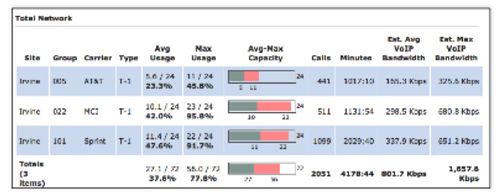By: John Shepler
You understand that Unified Communications, powered by VoIP telephony, is the future of business communication. You also recognize its potential to boost productivity. However, the fear of completely overhauling your existing system is holding you back. While your current phones, connected through old wiring, might seem adequate for making and receiving calls, they limit your communication capabilities. To unlock more advanced features, transitioning to an all-IP network is essential.
Not So Fast…
You might have come across stories about companies facing challenges after integrating their phones with their computer networks, such as distorted voices and dropped calls. This might make you hesitant, thinking it’s safer to stick with the old ways and let others experiment with new technology.
Can You Afford Not To?
However, by delaying this change, you risk falling behind your competitors who are leveraging the efficiency of an integrated system. This system encompasses business applications, desk phones, smartphones, video conferencing, and call centers. Eventually, your competitors’ enhanced responsiveness, fueled by these advancements, could give them a significant advantage, potentially leading to customer and even employee losses.
Looking Under the Hood
What if there were tools to eliminate the uncertainty of implementing VoIP and UC on your network? Most problems arise because networks optimized for computer file transfers often struggle with real-time applications like voice and video. Protecting these interactive streams from getting overwhelmed by data traffic is crucial. This requires visibility into your network’s performance.
VXSuite is a specialized toolset that analyzes your existing network for bandwidth limitations, latency issues, jitter, or congestion that could negatively impact VoIP performance. Implementing Quality of Service (QoS) on your network is essential to prioritize different types of data packets, ensuring optimal performance for all applications.
Before the Move
Before making any changes, utilize VXSuite to analyze your current system. It evaluates your existing voice call volume and usage patterns to calculate the minimum, maximum, and average bandwidth needed to support VoIP after the transition. Identifying and resolving issues at this stage ensures a smoother transition.
A Quality of Experience Assessment, conducted through software agents deployed on your network, simulates VoIP test calls to identify potential bottlenecks. Each call is analyzed for delays, jitter, and packet loss, receiving a Mean Opinion Score (MOS) that reflects the voice communication quality.
After the Move
VXSuite continues to monitor call quality and network issues during the VoIP and/or UC system rollout, even when used alongside your legacy PBX system. It generates reports on system performance and triggers alarms if problems are detected.
Continuing Support
VXSuite’s cloud-based analytics provide continuous monitoring to maintain voice quality and proactively identify and resolve issues. You can set thresholds for various metrics like delay, jitter, packet loss, MOS, CPU utilization, and memory utilization. This allows your IT team to receive instant notifications when problems arise, preventing unexpected disruptions.
The Toolset You Really Need
If the fear of things going wrong has prevented you from upgrading to VoIP and Unified Communications, it’s time to learn more about VXSuite tools and cloud-based communications. These tools can enhance your productivity and potentially reduce costs.


